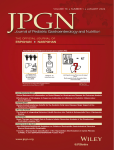Serum Type III Procollagen in Children with Type I Hereditary Tyrosinemia
ABSTRACT
Background:
Type I hereditary tyrosinemia leads to hepatic dysfunction and fibrosis and is associated with a high risk of hepatic malignancy. Serum N-terminal propeptide of type III procollagen is a sensitive marker of organ fibrosis of diverse origins. The current study was conducted to determine whether analysis of serum levels of type III procollagen in hereditary tyrosinemia would be useful in the follow-up of the progressive liver disease and eventually in detecting hepatic malignancy.
Methods:
Serum N-terminal propeptide of type III procollagen was sequentially studied in 10 children with type I hereditary tyrosinemia.
Results:
At diagnosis of type I hereditary tyrosinemia, serum N-terminal propeptide of type III procollagen ranged from 0.6 to 2.9 multiples of age-related median. During follow-up, serum N-terminal propeptide of type III procollagen decreased, yet remained elevated 0.2 to 2.6 years after diagnosis. Children with the acute type of the disease tended to have higher serum N-terminal propeptide of type III procollagen than did those with the chronic type. Porphyria crises were associated with elevated serum type III procollagen. The one patient receiving 2-(2-nitro-4-trifluoromethyl-benzoyl)-1,3-cyclohexanedione (NTBC) did not differ from the other ones in serum type III procollagen levels. Serum N-terminal propeptide of type III procollagen did not increase with developing hepatocellular carcinoma.
Conclusions:
Serum N-terminal propeptide of type III procollagen may be useful in monitoring the hepatopathy in type I hereditary tyrosinemia but is not useful in detecting malignant transformation in the liver.




